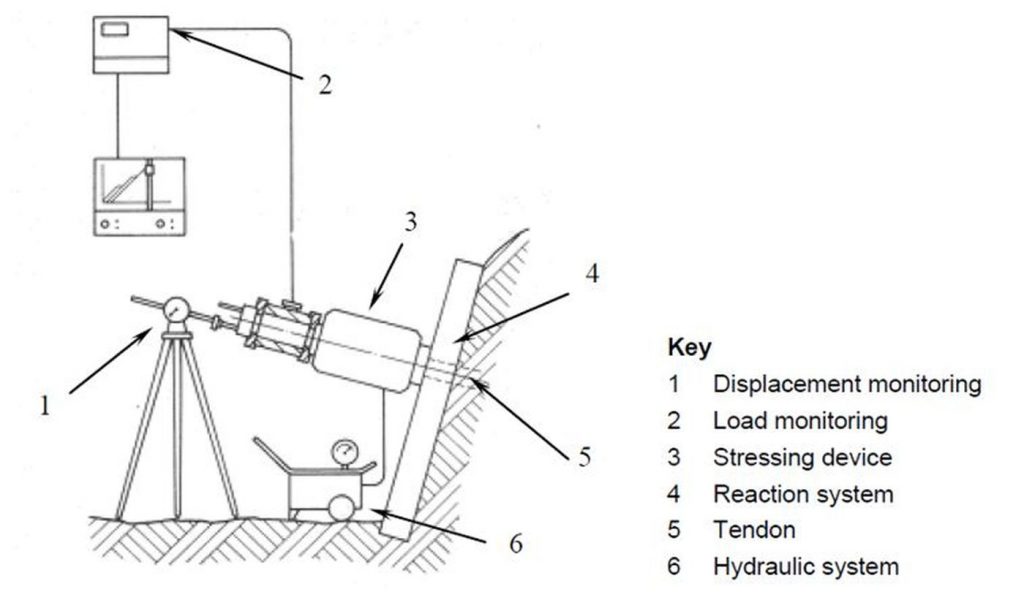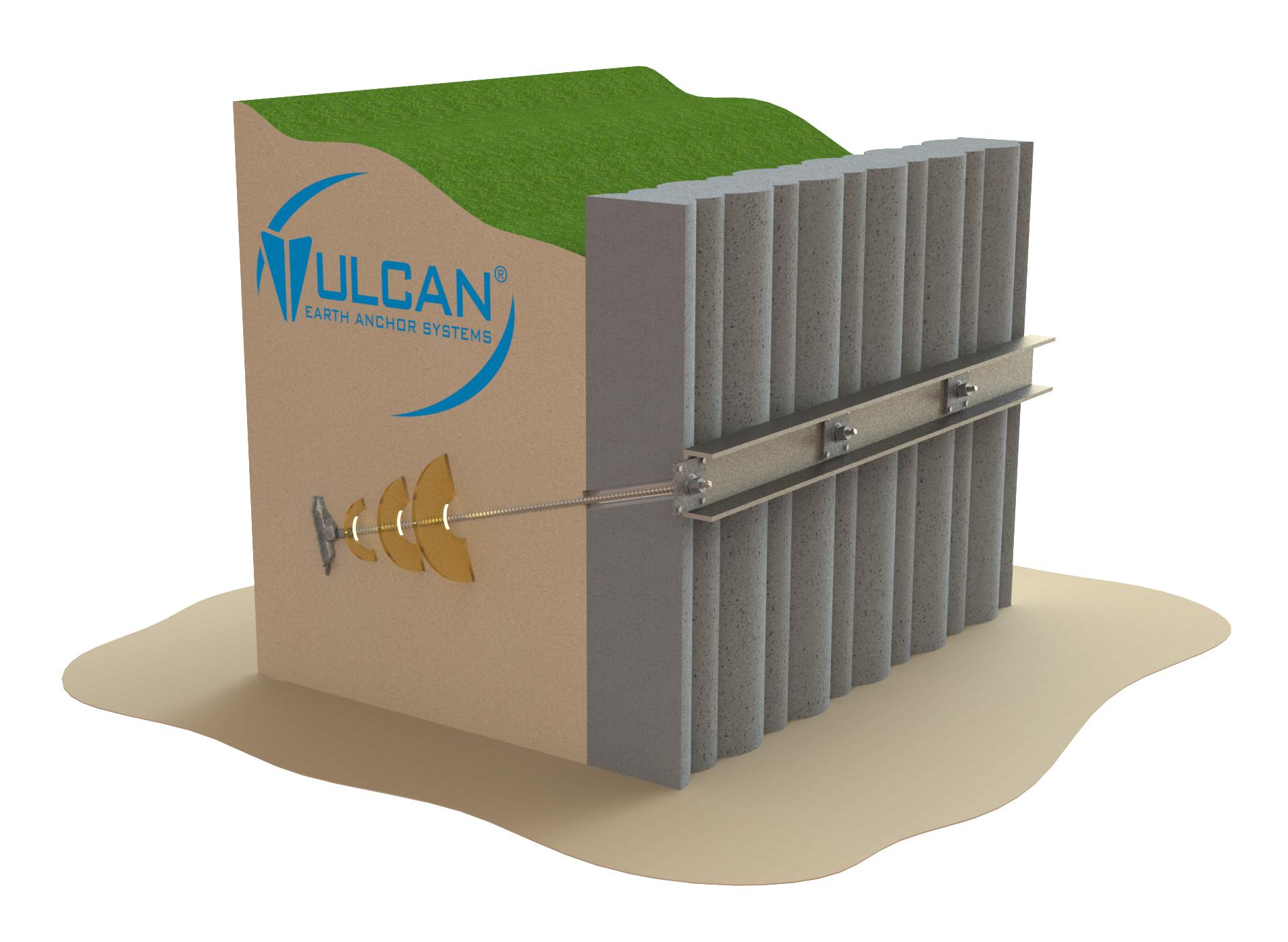Manta Ray anchors: Perfect for Flood-Prone Areas
Wiki Article
How Durable Earth Anchors Job: A Comprehensive Guide to Soil Anchoring Solutions
Sturdy Earth anchors play a vital duty in giving security and assistance in different construction applications. By installing deeply into the ground, they resist vertical and lateral pressures efficiently. Various kinds of anchors accommodate numerous soil problems, making them flexible. Understanding their technicians and installation strategies is crucial for making best use of efficiency. What elements affect their performance, and exactly how do they compare to traditional methods? The solutions might surprise you.Comprehending Durable Earth Anchors
Sturdy Earth supports act as crucial elements in various building and landscaping tasks, offering security and support in difficult soil conditions. These anchors work by being installed right into the ground, where they resist vertical and lateral forces. Their style enables for safe add-on to structures, guaranteeing they continue to be secured versus dirt movement or external loads.The performance of heavy-duty Earth supports largely depends on the kind of dirt and the anchor's installation deepness. Proper installment strategies are important, as they establish the support's holding capability. Environmental variables, such as moisture and freeze-thaw cycles, can likewise impact performance.These anchors are regularly utilized in applications ranging from safeguarding fencings and keeping walls to supporting momentary frameworks during adverse climate condition. Comprehending the concepts behind sturdy Earth supports is vital for professionals looking for to boost the resilience and safety of their projects.Types of Heavy-Duty Earth Anchors
Various kinds of sturdy Earth supports are created to fulfill details needs based on dirt conditions and task demands. Helical supports, featuring screw-like blades, are effective in softer dirts, using high load capacities and simple installment. Driven supports, which are hammered right into the ground, are ideal for rocky surfaces and offer instant load support. Tie-back anchors are frequently utilized in preserving wall surface applications, enabling side assistance by anchoring right into the ground at an angle. An additional kind is the cast-in-place support, suitable for concrete applications, as they are incorporated into foundations for enhanced stability. Lastly, dirt screw anchors are functional choices that can be made use of in different dirt kinds, providing reputable stress and compression capabilities. Each type offers distinctive applications, guaranteeing stability and safety in construction and landscaping tasks. Recognizing these choices enables informed choices in picking the appropriate Earth securing option.The Mechanics of Soil Anchoring

Understanding the auto mechanics of soil anchoring calls for an examination of numerous kinds of Earth anchors and their setup methods. Each support kind provides one-of-a-kind characteristics that affect its effectiveness in various soil problems. Appropriate installation methods are essential for making best use of the securing system's security and performance.
Kinds Of Earth Anchors
Earth supports, vital components in soil anchoring systems, come in numerous kinds, each made for details applications and dirt problems. The most common types consist of screw anchors, which are twisted into the ground, providing solid lateral resistance. Helical supports include blades that enable efficient installment in different dirt types, making them appropriate for both momentary and long-term applications. Driven anchors, usually made from steel, are hammered right into the dirt and are reliable in rocky or dense atmospheres. Auger supports make use of a helical design to assist in installment in softer soils. Plate supports consist of a level plate buried horizontally, dispersing tons over a larger area, ideal for applications calling for high lots capabilities in cohesive dirts.Setup Methods Explained
Proper setup methods are important for the efficiency of dirt anchoring systems. The procedure generally starts with site assessment, verifying the chosen location can support the support's load. After determining the right anchor kind, appropriate hole deepness and angle need to be developed. The setup involves driving the support into the ground utilizing specific equipment, such as manual or hydraulic vehicle drivers, to achieve ideal embedment. Post-installation, tensioning the support is essential to assure stability; this is typically confirmed with load testing. Furthermore, bordering soil conditions should be kept track of to stop displacement. Complying with these techniques not only improves the anchor's performance however also extends its life-span, offering trusted assistance for various applications.Applications of Heavy-Duty Earth Anchors
While sturdy Earth supports are usually related to building and construction and landscaping, their adaptability reaches a range of applications throughout various industries. In civil design, they give necessary assistance for keeping wall surfaces, making certain security in locations susceptible to soil disintegration. The marine market uses these anchors for protecting docks and marinas, stopping motion triggered by trends and currents. Furthermore, in the telecommunications market, heavy-duty Earth supports are considerable for stabilizing cell towers and various other high frameworks against wind forces. Agricultural applications additionally benefit, as these anchors can safeguard structures like greenhouses and animals fence, ensuring they stand up to harsh climate condition. Moreover, in renewable resource jobs, such as wind ranches, Earth anchors play an essential function in securing generator structures, enhancing general safety and security and efficiency. This broad variety of applications highlights official website the flexibility and integrity of heavy-duty Earth supports across numerous fields.Benefits Over Typical Anchoring Techniques
Although standard anchoring approaches have actually long been trusted for security, heavy-duty Earth supports use significant advantages that boost performance and effectiveness. One significant advantage is their remarkable load-bearing ability, which enables them to stand up to greater pressures without failure. This toughness makes them perfect for requiring applications, such as in building and energy installations.Additionally, durable Earth anchors are made for much deeper installment, offering higher security in numerous soil problems, consisting of loosened or sandy dirts. Their resistance to rust and ecological aspects ensures a longer life expectancy and reduced maintenance expenses see page contrasted to standard methods.Moreover, these supports can be installed with minimal disturbance to the surrounding location, preserving the honesty of the landscape. In general, sturdy Earth anchors present a reliable and trusted option for securing needs, going beyond the restrictions typically connected with standard anchoring methods.Setup Refine and Best Practices
The installation procedure for dirt securing services starts with thorough prep work and site analysis to guarantee peak performance. Following this, a step-by-step setup overview provides clear directions for reliable execution (Manta Ray anchors). Following these ideal methods is essential for attaining lasting and trustworthy anchoring outcomesPrep Work and Site Assessment
Efficient preparation and extensive site examination are crucial actions in the installation of dirt anchoring solutions. Prior to installation, the dirt kind should be assessed to identify its bearing ability and viability for anchoring. Performing a geotechnical study can give important information about soil structure, dampness levels, and possible ground motion. Additionally, determining existing structures, plants, and utilities is essential to avoid disturbance during installment. The location ought to be removed of debris and barriers to ensure secure accessibility for devices. Climate condition ought to also be checked, as adverse conditions can impact both security and installation efficacy. By meticulously preparing the website and reviewing all pertinent elements, the possibility of successful support efficiency is significantly increased.Step-by-Step Installment Overview
An extensive setup process is vital for accomplishing suitable performance of soil securing solutions. The installment begins with choosing the suitable support kind and ensuring the site is free from particles. Next off, appropriate hole placement is figured out based on tons needs. Once the location is developed, openings are drilled to the specified depth and diameter using the proper tools. The anchor is after that inserted right into the hole, making certain it is lined up properly. After securing the anchor, soil is backfilled and compressed to enhance stability. It is essential to comply with supplier standards throughout the process. A post-installation inspection validates that the supports are effectively positioned and working as intended, providing reputable assistance for the designated application.
Maintenance and Examination of Earth Anchors
Routine maintenance and evaluation of Earth supports are crucial for making sure long-lasting performance and stability. Routine checks permit for the very early discovery of concerns such as deterioration, loosening, or dirt activity. Examiners ought to search for indications of corrosion or destruction on the anchor parts, particularly at the connection factors. Furthermore, the bordering soil ought to be evaluated for disintegration or modifications in wetness material, which can impact support effectiveness.It is recommended to establish a routine assessment timetable, ideally a minimum of annually, depending upon environmental problems. During evaluations, all visible elements should be cleaned up to eliminate dust or particles that can hide possible issues. Any indicators of distress, such as turning structures or uncommon settling, should trigger immediate assessment. Correct paperwork of assessments can help in tracking anchor performance over time and assist in timely upkeep activities, making sure the supports click here for more remain practical and reliable.Regularly Asked Concerns
What Materials Are Heavy-Duty Earth Anchors Normally Made From?
Heavy-duty Earth anchors are generally constructed from sturdy materials such as galvanized steel or stainless steel, making sure toughness and resistance to corrosion. These products provide lasting assistance and security in various dirt conditions and applications.How Do Soil Conditions Affect Support Performance?
Dirt problems substantially affect anchor performance. Variables such as dirt kind, moisture content, and compaction affect the anchor's hold and stability, with cohesive soils typically giving better resistance than sandy or loosened soils, impacting total efficiency.
Can Heavy-Duty Earth Anchors Be Reused After Elimination?
Heavy-duty Earth anchors can be reused after elimination, given they are examined for damage and wear. Proper cleaning and maintenance boost their longevity, ensuring efficient efficiency in succeeding setups when problems permit risk-free reinstallation.What Are the Environmental Effects of Utilizing Earth Anchors?
The ecological influences of making use of Earth anchors include potential dirt disruption, disturbance of neighborhood communities, and possible contamination of groundwater. Nevertheless, if used sensibly, their benefits commonly surpass these worries, advertising security in various applications.Exactly how Do I Pick the Right Anchor for My Project?

Report this wiki page